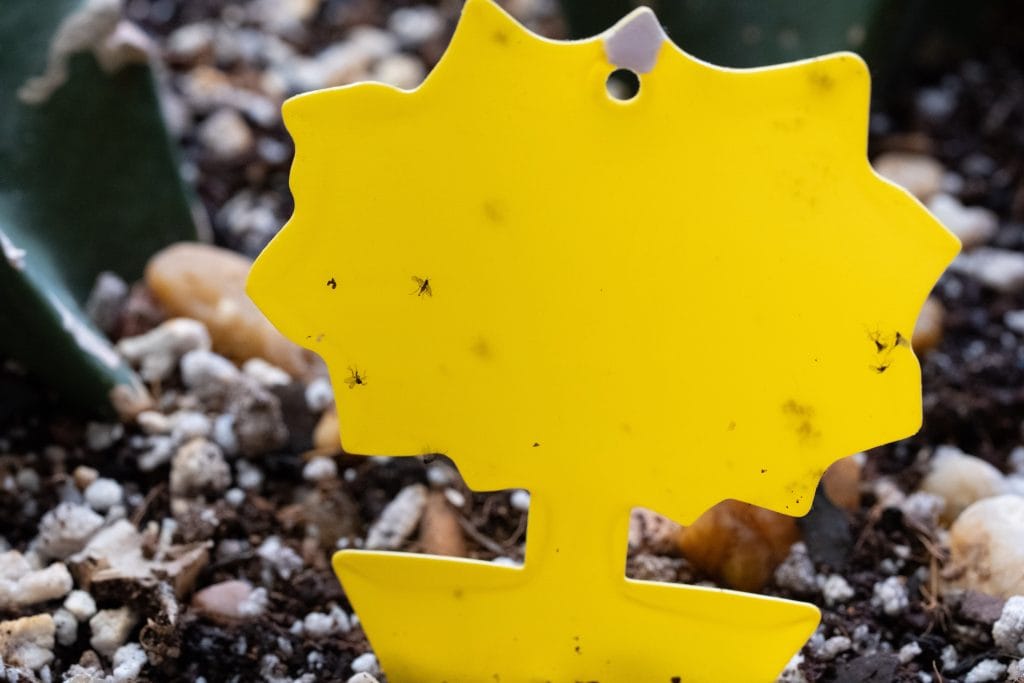Fungus gnats
If you grow plants inside, you have dealt with these annoying little bugs. They are vectors for disease in seedlings and mature plants and can reduce the growth and vigor of mature plants. We will look at ways to control some of the myths of fungus gnats effectively.
Some of the Myths
Myth number 1: If you have fungus gnats, you are over-watering.
Fungus gnats can survive in a wide range of conditions. Such they can even live in bone-dry soil! I was growing some cactus seedlings and had gotten fungus gnats in the soil. My seedlings were falling over with their roots being eaten completely. I put a fan on the seeds for a week and let the soil dry. While transporting some surviving seedlings into a new media, I saw some larvae within the coco coir. The larva had made a small mucus-filled home for itself and was feeding within that small area. I have a cactus that I am currently watering bi-weekly in a clay pot in a medium organic mix. Even that has fungus gnats.
Myth number 2: Just put Sand or Demarcus earth on your soil.
If you have any drain holes in your pots, the fungus gnats will use that as an entry and exit point for your soil when using sand. DE (Demarcus Earth) works best when dry and against hard-bodied insects. Once wet and dried, it can significantly reduce the efficacy rate. I had layered DE on top of the soil, and the damn buggers started going through holes they likely dug after it caked onto the top of the soil.
Myth number 3: Use apple cider vinegar and soap
This works to a degree, but it only works for 1-2 days before the fungus gnats stop entering the liquid.
Myth number 4: Use Bti dunks or bits on top of the soil
Bti is effective, but these dunks and bits have little Bti. From my experience, there are better soil drench applications than this one. I will go into how I use Bti to control fungus gnat larvae.



Controls
That being said, there are a lot of controls out there that work to varying success. I have tried a lot, and I will share some of the results and issues I had with some of the more effective controls.
Sticky Traps: Sticky Traps are a great way to monitor your current population and to control adults. These traps work by attracting the adult fungus gnats to the sticky surface, where they become stuck and can no longer lay eggs in your soil.
Stratiolaelaps Scimitus (formerly Hypoaspis miles)
These studies have shown to be effective. My personal experience within my house. They have lived in my soil all winter long. Never did I see a knockout of fungus gnats from these controls, but I saw a significant reduction.
Nematodes:
These are highly effective, but it isn’t easy to get a live batch. If I water every plant with live nematodes, my house will be pest-free for the winter. A cheap little microscope from Amazon can check and see if they are alive upon receiving nematodes from a vendor. Put them in some water and check for some swimming action. Unfortunately, if you do not see any movement… you have a dead batch.
H202:
This does a knockback, but you must thoroughly drench the soil and all plants. It requires multiple applications and can damage your plant roots if done too often. Not to mention, it kills most of everything, good and bad, in the soil.
Bti:
I use a liquid Bti as a soil drench when I start seeing early signs of fungus gnats. This works by mucking up the larva and stopping it from eating. I get my liquid Bti from Amazon. Some people will take the dunks of bits and shake them around to soil drench. I prefer the concentrated liquid Bti for ease of application and higher active ingredient concentration.
Neem oil:
I have never had much luck with this product; some people swear by it. I have been told that if you are not killing off the larva with it. You have the wrong type of neem extract. I tried a few different products and never went back to this.
Contact Kill Insecticide:
Most contact-kill insecticides will kill the adult flies when they are outside the soil as they spend a lot of time inside the soil. They are not the most effective with a single application.
Conclusion
Early detection is critical to reducing an outbreak. To control fungus gnats reliably, multiple stages of life must be attacked. They are not only annoying to us humans, they damage our plants.
